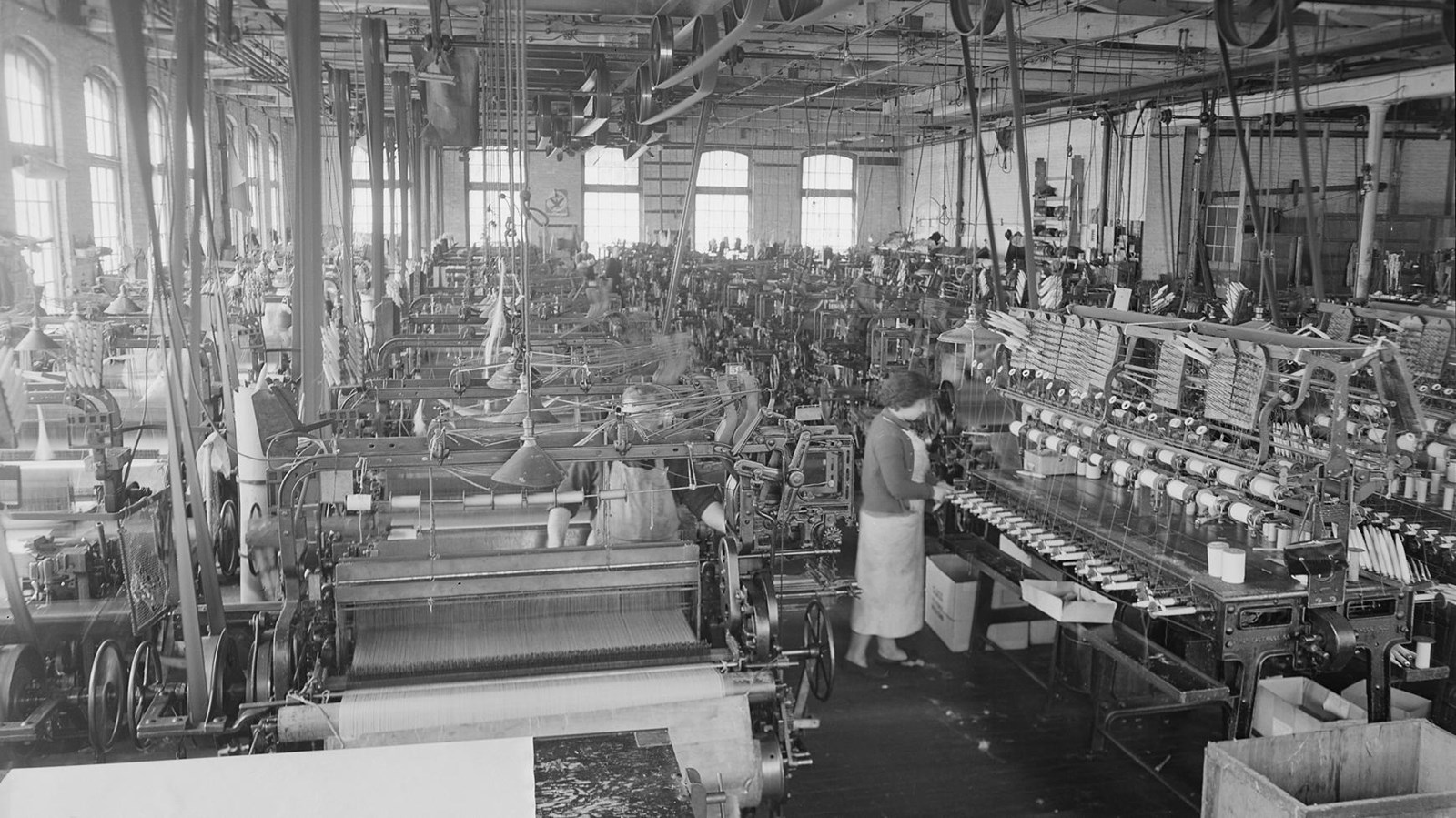Last updated: December 27, 2023
Place
Paterson, New Jersey

U.S. National Archives and Records Administration (NAID: 518608)
American World War II Heritage City
Paterson had over 300 allied defense industries during the war; Paterson’s two key contributions to the war effort—silk and aircraft manufacturing—warranted increased civil defense preparations and the establishment of military observation and defense posts. Prior the First World War, Paterson earned the nickname “Silk City,” at its height producing 50% of the nation’s finished silk and 80% of global production. Due to wartime rationing and disruption of Asian supply chains, a group of smaller Paterson firms called the Allied Textile Printers (ATP) pivoted from silk production to working with nylon. ATP retooled its operations and maintained a steady output to fill government contracts and continued production of limited civilian goods.
The Curtiss-Wright Corporation was critically important industry for the allied war effort, producing thousands of military aircraft engines that powered every B-17 Flying Fortress and Douglas SBD Dauntless dive bomber as well as numerous other military vehicles such as the M4A6 Sherman and M6 Heavy Tanks. By the end of the War, Curtiss-Wright had built 142,840 aircraft engines, 146,468 electric propellers, and 29,269 aircraft. Of these, 77,554 engines--over half of their total wartime production--were produced in Paterson. The corporation employed over 50,000 employees and built 2.3 million+ square feet of new manufacturing space. Many women were employed as men left for the warfront and the city’s African American population swelled as thousands were employed in the defense industries.
Great emphasis was placed upon Paterson’s Civil Defense preparedness. After it was designated a likely "target area," the Paterson Fire Department sent men to train at the Federal Chemical Warfare School at Maryland's Edgewood Arsenal as well as sent representatives to train air wardens and teach at schools for Instructors of Voluntary Fire Brigades. Sixteen Auxiliary Fire Companies with over three hundred additional firemen were established. Paterson firefighters also served directly - at least thirteen received the Purple Heart.
Paterson preserves its WWII contributions and history in several ways. Annual Memorial Day and Veteran's Day events highlight the sacrifices made by those who served in the conflict. The city has invested in making public memorials and commemorations more accessible - something particularly important for WWII veterans as most are in their eighties or nineties. In 2019 the city invested over $150,000 to construct an ADA-accessible road, parking lot, and walkway at Veteran's Memorial Park in Hayden Heights, increasing access to the Hill of Heroes memorial. Organizations like the Paterson Veterans Council support those who served and their stories, while institutions like the Paterson Museum use exhibits to educate and preserve them.
Commemoration also includes interpretive programming and performances. The Paterson Museum hosted a "birthday celebration" on Lou Costello's birthday including reenacting the Paterson Victory Bond award. Collaborations with performers such as the US Army Jazz Ambassadors have highlighted WWII--at their 2021 performance at Paterson Great Falls National Historical Park the band's set list included patriotic and period selections as well as a salute to veterans.
